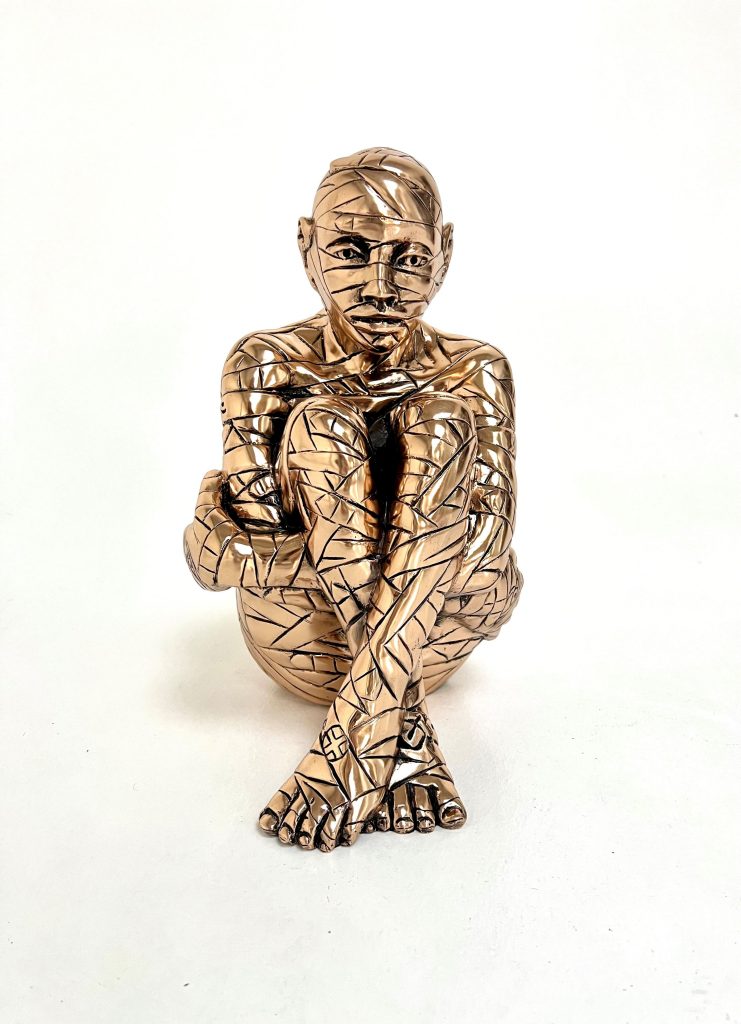
I.F.A.G.


Chattra
Rabarama
+ Follow
Bronze
32.5x20x26 CM
12.79x7.87x10.23 IN
This work is part of a limited edition set.
FREE SHIPPING WORLDWIDE
Chattra is a word that derives from Sanskrit and literally means "parasol", a symbol of royal dignity and the representation of spiritual power. Derived from Indian art, it is represented in different shapes and variations, often they are monochromatic or multicolored silk ribbons. The symbolic meaning of the parasol derives from its function of protection in case of bad weather or too much sun, which has always been identified as a sign of wealth. This is why it has become a symbol of power and royalty. The parasol symbolizes the compassion and protection of all sentient beings, from pain, disease, mental poisons and ignorance.
Rabarama also recalls the symbolic meaning of the title in the engravings, representing ribbons that surround the whole figure, inserting here and there other symbols deriving from ancient religions rather than from centuries-old philosophies. The pose in which the figure shows itself wants to reinforce the concept of protection, and at the same time, hugging itself as in a cocoon. However, the gaze is fixed on what is in front of him, indicating the intent to face the future with serenity and determination.
Chattra is a word that derives from Sanskrit and literally means "parasol", a symbol of royal dignity and the representation of spiritual power. Derived from Indian art, it is represented in different shapes and variations, often they are monochromatic or multicolored silk ribbons. The symbolic meaning of the parasol derives from its function of protection in case of bad weather or too much sun, which has always been identified as a sign of wealth. This is why it has become a symbol of power and royalty. The parasol symbolizes the compassion and protection of all sentient beings, from pain, disease, mental poisons and ignorance.
Rabarama also recalls the symbolic meaning of the title in the engravings, representing ribbons that surround the whole figure, inserting here and there other symbols deriving from ancient religions rather than from centuries-old philosophies. The pose in which the figure shows itself wants to reinforce the concept of protection, and at the same time, hugging itself as in a cocoon. However, the gaze is fixed on what is in front of him, indicating the intent to face the future with serenity and determination.